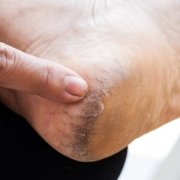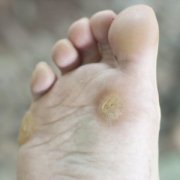
Diabetes: ‘Most NHS costs wasteful, says Diabetic Medicine’!!
· Diabetes costs ‘out of control’
· Diabetes blood pressure warning
· Diabetes issues ‘at record high’
The majority of NHS spending on diabetes is avoidable, says a report in the journal ‘Diabetic Medicine’.
It suggests that 80{76538c1e13c71f07e689cf26caa978d500acd4b32509678cf1e3af41f6de1939} of the NHS’ £9.8bn annual UK diabetes bill goes on the cost of treating complications.
Experts say much of this is preventable with health checks and better education – something the Department of Health says it is tackling.
The report also predicts that by 2035, diabetes will cost the NHS £16.8bn, 17{76538c1e13c71f07e689cf26caa978d500acd4b32509678cf1e3af41f6de1939} of its entire budget.
“Unfortunately, many people in hospital with diabetes do come to harm as a result of, I’m afraid to say, inadequate care in hospital”.
Diabetes accounts for 11{76538c1e13c71f07e689cf26caa978d500acd4b32509678cf1e3af41f6de1939} of all NHS inpatient expenditure and costs the service around £23.7bn last year, a figure projected to increase to just under £40bn by 2035.
27 April 2012 BBC News Health
Where recurring pressure or constant friction occurs on the foot or toes the body tries to protect itself by building up layers of skin which over time become hard. Unlike Callus or Hard Skin which tends to form over a larger area of the foot, a corn tends to be more focused in a small area roughly round in shape, penetrating quite deep into the skin and often no bigger than the tip of your little figure.
Hard corns commonly occur on the top of the smaller toes or on the outer side of the little toe. These are the areas where poorly fitted shoes tend to rub most.
Another problem area is that between toes where soft corns sometimes form, most commonly between the fourth and fifth toes. These are softer because the sweat between the toes keeps them moist. Soft corns can sometimes become infected.
Corns on toes
What causes corns?
The foot consists of many small bones particularly in the toes. Where the bones of the toes and feet become a little broader and bumpy closer to the joints, extra rubbing (friction) or pressure can occur on the skin overlying a small rough area of bone, this will cause the skin to thicken. This may lead to corns forming.
Common causes of rubbing and pressure are tight or poorly fitting shoes which tend to cause corns on the top of the toes and side of the little toe. Long bouts of walking or running can also lead to calluses on the sole of the feet. Corns are more likely to develop if you have very prominent bony toes, thin skin, or any deformities of the toes or feet which cause the skin to rub more easily inside shoes.
What are the treatments for corns?
If you develop a painful corn it is best to get expert advice from a Foot Health Practitioner to diagnose and treat foot disorders . You should not cut corns yourself, especially if you are elderly or have diabetes.
Advice and treatments for the removal of corns include the following:
Trimming (paring down)
The thickened skin of a corn or callus can be pared down by a Foot Health Practitioner by using a scalpel blade. Any pain caused from the corn is usually removed as the corn is pared down and the pressure on the underlying tissues eased. Sometimes, repeated or regular trimming sessions are needed. Once a corn has been pared down it may return if properly fitted shoes are not worn. Where there is a bio-mechanical disorder orthotics should be prescribed.
Toe protection and foot pads for corns
Typically corns are caused due to ill fitting shoes or slight deformities of the feet which causes the foot or toes to rub against the inside of the shoe. Depending on the position of a corn, placing a cushioning pad or shoe insole in the area of pressure may be of benefit. If there is a corn between the toes, a special sleeve worn around the toe may ease the pressure. A special toe splint may also help to keep your toes apart to allow a corn between toes to heal. As a Foot Health Practitioner I will be able to advise you on any appropriate padding, insoles or appliances you may need.
Surgery
If you have a foot or toe abnormality causing recurring problems and all other routes have been exhausted, surgery may be the only option left for you. Surgery may help to straighten a deformed toe, or to cut out a part of a bone that is protruding out from a toe and is causing problems. If an operation is required you will be referred to a surgeon who will be able to discuss this with you in more detail.
 Most of us don’t consider the implications of not drinking enough water and especially the correlation between dry skin and feet.
Most of us don’t consider the implications of not drinking enough water and especially the correlation between dry skin and feet.


 Help in Halesowen and Stourbridge with Pain in the Ball of the Feet
Help in Halesowen and Stourbridge with Pain in the Ball of the Feet
 Need Treatment for Corns in Halesowen or Cradley Heath
Need Treatment for Corns in Halesowen or Cradley Heath






